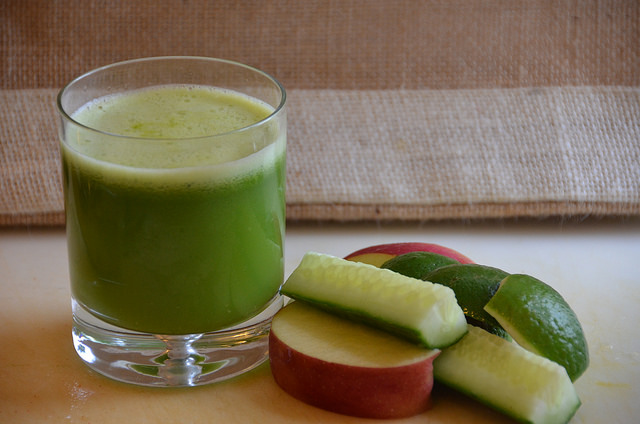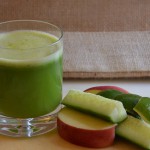by Amy Mullins, PhD, RDN | Mar 23, 2015

Prepare a shopping list
It seems that we are rushing here and there, doing things at the speed of light. We may find ourselves consumed by work, meetings, school, sports practice for the kids… an endless list of things to keep us active, stressed, and often frantic.
Life has become so busy that we often forget to take care of ourselves, which can dramatically increase the risk of preventable chronic diseases. According to the Centers for Disease Control (CDC), chronic diseases such as high blood pressure, high cholesterol, and type-2 diabetes accounted for over 26% of deaths in the United States in 2013. Chronic stress, combined with poor planning, can likely lead to unhealthy exercise and eating habits for yourself and your family.
Planning ahead is critical in side-stepping the impacts of poor nutrition and obesity-related chronic diseases.
Follow these simple tips:
- Plan meals (including brown-bag lunches and snacks) you and your family like that include lean protein, whole grains, low-fat dairy, and lots of fruits and vegetables.
- Save time and money by making a grocery list before going to the store.
- Be a master planner! Save your weekly meal plans and grocery lists to use again another week.
- Avoid take-out and make foods that you can bring to work the next day for lunch.
- Avoid the vending machine and bring snacks to work like nuts, fresh or dried fruit, or whole-grain crackers and hummus.
- Don’t forget to eat breakfast! A quick bowl of cereal with low-fat milk and a small cup of orange juice can help you make it to lunchtime.
- Carry a tumbler! Fill up on water all day, anywhere and everywhere, to keep you hydrated and help you to avoid sugary drinks and sodas.
Make sure to plan time each day to be active. Taking short walks and stretching at your desk can make a world of difference in your health and attitude. For additional information on healthy eating, please visit ChooseMyPlate.gov and Nutrition.gov.
by Dorothy C. Lee | Mar 17, 2015

Egg food safety at Easter time
Easter activities often include eggs. During the Spring holiday, eggs are both a decorative craft object and an inspiration for springtime fun and games, and, oh by the way, they are fun to eat too.
Eggs and egg products can be an important part of your diet. Although there are many myths and misconceptions about how to safely cook and handle eggs, all it really requires is care. By following a few simple guidelines, eggs and egg products can play a valuable and economic role in your holiday menu.
To avoid the possibility of foodborne illness, fresh eggs must be handled carefully. Even eggs with clean, uncracked shells may occasionally contain bacteria called Salmonella that can cause an intestinal infection. The U.S. Food and Drug Administration (FDA) is working to prevent this problem in eggs by requiring that egg producers obtain chicks that are certified Samonella-free, that the hens are kept in houses that are free from rodents and other Salmonella carrying sources, that the houses are continually tested for Salmonella, and that the eggs are stored at temperatures that retard Salmonella growth. Consumers play a large role in this prevention strategy. In fact, the most effective way to prevent egg-related illness is by knowing how to buy, store, handle and cook eggs—or foods that contain them—safely.
Following these instructions is important for everyone, but especially for those most vulnerable to foodborne disease—children, the elderly, and persons with weakened immune systems.
Buy Right
- Buy eggs only if sold from a refrigerator or refrigerated case.
- Open the carton and make sure that the eggs are clean and the shells are not cracked.
- Refrigerate promptly.
- Store eggs in their original carton and use them within 4 to 5 weeks.
Keep Everything Clean
Before preparing any food, remember that cleanliness is key!
- Wash hands, utensils, equipment, and kitchen work surfaces with hot, soapy water before and after they come in contact with eggs and egg-containing foods.
Cook Thoroughly
Cook eggs thoroughly. Thorough cooking is perhaps the most important step in making sure eggs are safe.
- Cook eggs until both the yolk and the white are firm. Scrambled eggs should not be runny.
Serve Safely
Bacteria can multiply in temperatures from 40°F (5°C) to 140°F (60°C), so it’s very important to serve foods safely.
- Serve cooked eggs and egg-containing foods immediately after cooking.
- For buffet-style serving, hot egg dishes should be kept hot, and cold egg dishes kept cold.
- Eggs and egg dishes, such as quiches or soufflés, may be refrigerated for serving later but should be thoroughly reheated to 165°F (74°C) before serving.
Chill Properly
- Cooked eggs, including hard-boiled eggs, and egg-containing foods should not sit out for more than 2 hours. Within 2 hours, either reheat or refrigerate.
- Use hard-cooked eggs (in the shell or peeled) within one week after cooking
On the Road
- Cooked eggs for a picnic should be packed in an insulated cooler with enough ice or frozen gel packs to keep them cold.
- Don’t put the cooler in a hot car—carry it in the air-conditioned passenger compartment of the car.
Safe Handling Instructions
To prevent illness from bacteria: keep eggs refrigerated, cook eggs until yolks are firm, and cook foods containing eggs thoroughly.
Hard-cooked Easter eggs can help stretch your food dollars. Packed with high-quality protein, vitamins, and minerals, they add good nutrition when included in casseroles, sandwiches, and salads. Remember, hard-cooked eggs should be refrigerated as much as possible between cooking, decorating, and the hunt or the display.
However they are used, eggs are delicious, nutritious, and economical.
For further information, contact
Dorothy C. Lee, C.F.C.S.
Family & Consumer Sciences Agent
UF IFAS Extension Escambia County
(850) 475-5230
dclee@ufl.edu

by Kristin Jackson | Mar 13, 2015

Bertholf. (N.D.) Juicing from http://goo.gl/Neu02U
Don’t fool yourself into thinking that drinking 100% fruit juice is the same as eating the whole fruit. Researchers from the Harvard School of Public Health found two key things that may have you re-thinking your breakfast drink:
- In many cases, fruit juice contains as much sugar as soft drinks, although the sugar in fruit juice is naturally occurring.
- Despite the calories in fruit juice, people who drink juice don’t feel as full as if they ate the fruit, so they end up consuming more calories.
When it comes to your children, over-consumption of fruit juice or consuming greater than 12 ounces a day was found to be associated with short stature and obesity. In 2006, 10% of all annual medical spending went to treating obesity-related diseases. When it comes to children specifically, research estimates the average total health care expenditures for a child treated for obesity is nearly three times higher than the average health care cost for all other children.
At this point, you probably are asking, “If juice is out, then what should I do?” UF/IFAS Extension has a solution for you. Try remixing your current plate. Instead of going for the orange juice, grab an orange. Substitute your fruit juice for its whole fruit counterparts. If you decide to make the swap, you will find yourself in need of a drink; try water or milk. For more resources on building a healthy plate, visit:
ChooseMyPlate.gov
Healthy Eating: Smart Snacking
Choose MyPlate: Drink Water Instead of Sugary Drinks
References:
Dennison, B., Rockwell, H. and Baker, S. Excess fruit juice consumption by preschool-aged children is associated with short stature and obesity. Pediatrics 100(4):733, 1997
Department of Nutrition at Harvard School of Public Health. Fact Sheet: Sugary Drink Supersizing and the Obesity Epidemic. Nutrition Source, 2012
Finkelstein EA, Trogdon JG, Cohen JW, Dietz W. Annual Medical Spending Attributable to Obesity: Payer- and Service-specific Estimates. Health Affairs, 28(5): w822-831, 2009.
Marder W and Chang S. Childhood Obesity: Costs, Treatment Patterns, Disparities in Care, and Prevalent Medical Conditions. Thomson Medstat Research Brief, 2006
by Marjorie Moore | Feb 11, 2015

Photo taken by: Marjorie Moore
February is heart month, a time to consider including foods in your diet that will benefit your heart. Much has been in the media during the last few years about the positive heart health benefits of blueberries, red wine and dark chocolate. According to research, the compounds responsible for the positive effects are called flavonoids, which occur naturally in food.
Flavonoids that promote heart health fall into six major categories. One category is flavonols and those are found in small amounts in some fruits and vegetables. This is another good reason to consume these foods. An example of a good food source for flavonols is one cup of kale, which contains 62 milligrams of flavonols.
Another category, anthocyanindins, gives fruits and vegetables their red, blue or purple color and protects the body from free radicals. To get the most benefit from anthocyanindins, it is best to consume fruits and vegetables in their raw or fresh state. One cup of fresh cranberries contain 101 milligrams of anthocyanindins. Cranberry sauce has a much lower amount of anthocyanindins.
To learn more about flavonols and anthocyanindins and the remaining four flavonoids, click on this link http://edis.ifas.ufl.edu/pdffiles/FS/FS24400.pdf
Source: Facts about Flavonoids, EDIS Publication FSHN14-04
by Shelley Swenson | Jan 30, 2015

School Lunchtime
(SNAP Education Photo Gallery)
Do you have a child or grandchild who eats meals at school? Do they come home hungry and complain about the meals they are served? Have you taken any time to explain how the lunchroom food choices are made? If not, it may be time to have that conversation.
The 2012 school year brought major changes to the meals children eat at school. The new standards are major components of the Healthy, Hunger-Free Kids Act of 2010 and they were the first major changes to school nutrition in 15 years. You know the statistics….one-third of America’s school-age children are overweight or obese and at higher risk for diabetes, high blood pressure, depression, poor academic performance, and behavioral problems before they reach adulthood. These risks increase for low-income children who do not participate in federally-funded nutrition programs because they have to rely on their family’s limited resources. All of these conditions reflect in the food choices youth are making. The new school lunch meal standards may be the first step in reducing these statistics.
Take some time to remind your children or grandchildren there is a reason they are fed what they are offered in the cafeteria and the staff serves items that are nutritionally balanced and, if eaten, should provide for growth and a sharp attitude in the classroom.
Here are some key points to share. School meals are:
- High in nutrients and adequate in calories
- An appropriate balance between food groups
- Based on the latest nutritional science
- Intended to provide one-fourth of students’ daily calorie needs for breakfast and 1/3 for lunch
- Reflective of the different nutritional requirements for each age
- More nutritious foods because they consist of fruits, vegetables, and whole grains and fewer foods containing sodium and fat
- Providing fat-free milk (unflavored or flavored), 1% low-fat milk (unflavored), or a milk alternative. When did children decide that milk had to be flavored to be tasty? We need to turn this idea around; there is a great deal of sugar in flavored milk!
- Offering students options to eliminate waste
The best way to lessen waste is to not have any of the food thrown away. UF/IFAS programs in many schools (Family Nutrition Program (FNP) and Expanded Food and Nutrition Education Program (EFNEP)) offer food samples of unfamiliar foods and discussions of their value to increase student acceptance. This also is a parent’s job. Look over the school lunch menu, discuss it with your children, encourage them to try everything served, and request second servings if they remain hungry. Offer taste tests at home. Improving the way students view the food being served can make a big difference.
Are you familiar with MyPlate? Your children might be. Review it with them and contact your county Extension office if you need clarification on any aspect of it.

Encourage your children’s nutritional health. Remember, the goal of the changes in the school cafeteria is to improve children’s health; when followed correctly, the new meal standards make school meals healthier with the potential to improve children’s health. As a parent, you share in the responsibility to make this happen. Thanks for assisting us in ensuring the positive nutritional status of our children!!
by Marjorie Moore | Nov 22, 2014
 Eat, drink, be happy and be healthy this holiday season. My favorite holidays are just around the corner. It is an exciting time to be with family and friends. There is usually lots of food that may come with lots of calories and carbohydrates. Are you wondering how to survive this holiday season without adding more calories and carbohydrates to your diet?
Eat, drink, be happy and be healthy this holiday season. My favorite holidays are just around the corner. It is an exciting time to be with family and friends. There is usually lots of food that may come with lots of calories and carbohydrates. Are you wondering how to survive this holiday season without adding more calories and carbohydrates to your diet?
The first thing to keep in mind is to plan your meals to help keep your diabetes management on track. Persons with diabetes should space out their carbohydrate intake throughout the day. Fruits, starchy vegetables, dairy foods, and grain foods all contain carbohydrates. Eating the right amount of carbohydrates throughout the day will help you control your blood glucose levels. The Idaho Plate method of meal planning is one of many tools to help control carbohydrates while recommending at least one-half your plate consist of vegetables. More information on the Idaho Plate can be found at http://edis.ifas.ufl.edu/fy334 .
If you going to a party or eating at a friend or relative’s home and the meal time is around your normal dinner time, try to eat the same amount of carbohydrate that you normally would eat. You may ask your host if you can bring a covered dish. If so, take your favorite low carbohydrate dish to share.
Avoid or limit the amount of sugary drinks like soda, fruit punch or drinks, sweet tea and eggnog. These drinks raises blood glucose and can provide lots of calories in one serving. For example, one cup of fruit punch contains 100 calories or more and at least 30 grams of carbohydrate; and, one cup of eggnog may have as many as 344 calories and more than 34 grams of carbohydrates. A much better choice is to choose diet or other low-calorie drinks that are available in several flavors. Remember, water is a much healthier choice and has no calories.
Fill up on salad first. Filling up on salad or other raw veggies will fill you up without lots of calories.
Don’t forget to focus on conversation. Make an effort to meet new friends or circulate with those you know instead of eyeing the food.
Stay active this holiday season. Put yourself on your gift list by treating yourself to a personal trainer, fitness class series or membership to a gym.
Learn more about how you can enjoy eating healthy as a diabetic this holiday season by contacting your local UF/IFAS Extension Office .








